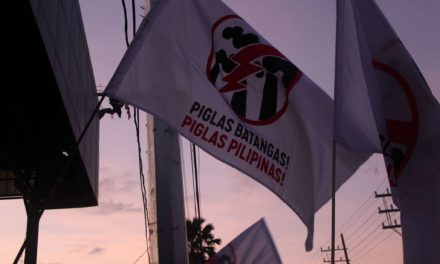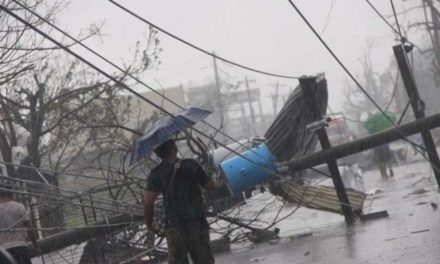Janet Redman*
Very little, it seems, at the end of
two weeks of climate negotiations that were less about climate than
business and more about calculated obstruction than negotiation.
The unprecedented booing of US under
secretary of state for democracy and global affairs Paula Dobriansky
was far less disturbing than the cheering that followed soon after.
The dramatic close to the Bali talks has helped create a public
impression that by reaching consensus on a roadmap for post-2012
treaty negotiations something useful happened here.
Depending on whose interests we're
talking about, this impression might be right. The Bali mandate
entrenches the power of big business, and the global financial
institutions that work on its behalf, without committing any
government to tangible emissions reductions. The assertion that Bali
should be considered a success for those most affected by climate
change — residents of small island states threatened by rising
waters, forest dwellers that stand to lose more land to agrofuel
plantations — should be seriously questioned.
MORE TRADING, MORE BANK
The proposals for climate change
mitigation and adaptation put forward in the Bali agreement lack much
detail, but they are articulated clearly enough to see that trading
in carbon credits, both through existing Kyoto mechanisms and newly
envisioned sectoral schemes, will likely be at the center of a global
treaty.
Outlined in the road map is an
Adaptation Fund that could reach $500 million by 2012, which would be
administered by the Global Environment Facility (GEF) with the World
Bank acting as trustee. One funding proposal suggests augmenting
donations to the Fund from industrialized countries by recouping a 2%
fee on revenues from carbon offset projects carried out under the
Kyoto Protocol's Clean Development Mechanism. Proponents of the
Adaptation Fund claim that by using the CDM, rich countries would be
‘forced' to finance clean energy projects in poorer countries.
The Fund's total capital is almost
insignificant compared to the $50 billion that Oxfam estimates the
developing world will need every year to cope with climate changes.
But by naming the CDM as a major source of funding for adaptation,
the Bali mandate entrenches carbon trading in future negotiations.
The proposal ensures that developing countries have an increasingly
vested interest in seeing market mechanisms flourish, and secures the
role of the World Bank in setting the rules of that market.
Leaving aside the fact that the Bank
has continued to finance oil and gas companies with public money to
the tune of $8 billion since 2000 (82% of which was for export to
industrialized countries), the Bank's existing carbon finance
portfolio has done little to mitigate climate change or support the
development of sustainable energy for the 1.6 billion people living
without access to electricity.
To date, the Bank has channeled more
that $1 billion from the most polluting companies in the
industrialized north to the most environmentally destructive
industries in the global south. Only a fifth of the active projects
are in the renewable energy sector, while more than 80% of the funds
dispersed have gone to coal, metal, cement and industrial gas
companies. Of the Bank's entire carbon finance portfolio only 2% of
the total $2 billion of capital raised is earmarked for projects with
explicit sustainable community development requirements.
CODE REDD
Considering the World Bank's less
than stellar track record, it is surprising to see the Bank called on
to take the lead in a proposal emerging from the Bali talks to reduce
emissions from deforestation in developing countries (REDD).
Delegates' inclusion of REDD in the
roadmap essentially folds forests into the carbon market, but does
little to explain the process by which forested countries would be
compensated for slowing deforestation.
The World Bank has stepped in to guide
a market in REDD credits through its newly launched Forest Carbon
Partnership Facility. The FCPF will select countries to pilot a
programmatic approach to carbon trading. These programs would differ
from the CDM by setting national-level reduction targets for a
country's entire forest sector, instead of creating baselines and
targets on a project by project basis.
Indigenous rights and sustainable
forestry groups have protested that there is nothing built into the
facility ensuring that the benefits of a global forest trading scheme
would reach forest peoples. In particular, critics have raised
warnings of massive displacement as companies rush to acquire
forested land and governments shift public policy to facilitate
industrial land grabs.
Investors, however, are quite pleased,
having long asked for the Bank to establish consistency throughout
the carbon market to help lower market entry risk and transaction
costs in carbon offset projects. By moving to a sectoral approach,
credits can be normalized across entire industries.
The Bank has in fact begun designing a
new Carbon Partnership Facility to expand the programmatic approach
into markets for carbon credits generated from power sector
development, gas flaring, energy efficiency, transportation and waste
management systems.
KEEPING AN EYE ON THE BANK
The growing role of the World Bank in
clearing a path for private capital in an expanded carbon market was
not lost on climate justice groups in Bali. Hundreds of activists
from groups from around the world demonstrated outside the FCPF
launch. World Bank side events and press conferences were peppered
with demands for the Bank to get out of the carbon market. As climate
negotiations unfold in the next two years scrutiny of the Bank's
climate programs will be increasingly important to ensure that
markets do not determine the shape of an international agreement to
stem greenhouse gas emissions.
* Janet Redman is a researcher for the
Sustainable Energy & Economy Network at the Institute for Policy
Studies in Washington, DC. She was in Bali as an NGO observer of the
UNFCCC climate negotiations. [email protected]








